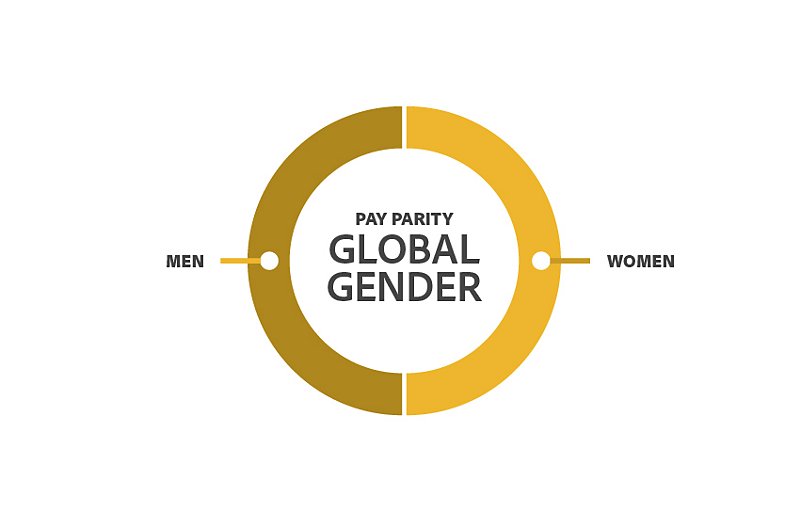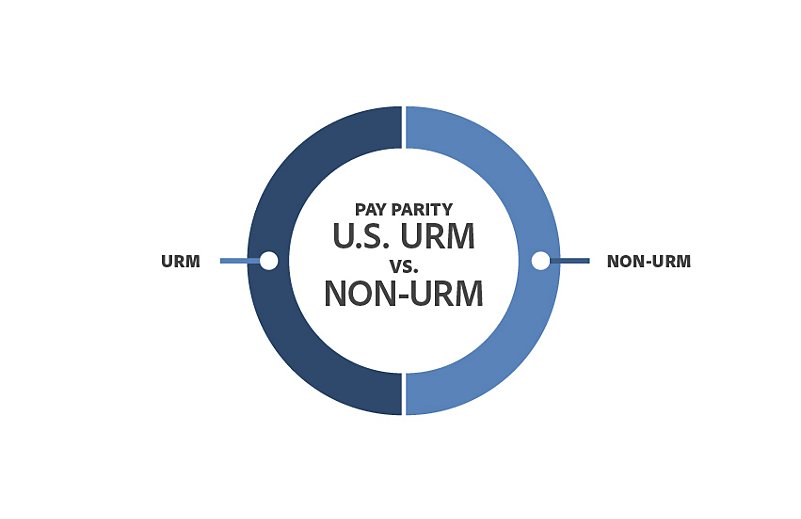Demonstrating a commitment to fair pay.
We define pay parity as ensuring that employees in the same job and location are paid fairly relative to one another, regardless of their gender or ethnicity.
One of the most important ways to show our employees we value them is by ensuring we pay them fairly. We’re proud that in October 2018 we achieved global pay parity between women and men. We also announced pay parity between U.S. URM* and non-URM employees in September 2020. We had previously disclosed that non-white employees were paid as much as white employees.
We continue to monitor our progress to ensure that we are creating a culture that fairly rewards and recognizes the contributions of all employees.
Many of our industry peers, customers, and partners have asked us how we’ve approached this — and how we are maintaining pay parity over time. In the spirit of helping other companies advance their own initiatives, we share our process and lessons learned.
Our progress to-date.


At pay parity between men and women globally.
At pay parity between U.S. URM* and non-URM employees.
In FY2022, Adobe maintained 1:1 pay parity ratio between women and men globally and between underrepresented minorities and non-underrepresented minorities in the US.
* Underrepresented minorities (URM) are U.S. employees who identify as Black/African American, Hispanic/Latinx, Native American, Pacific Islander, and/or two or more races.
Data reflects Adobe employees who have voluntarily disclosed their gender and U.S. race and ethnicity data. <1% of our global employee base has not disclosed gender data and 5% of our U.S. employee base has not disclosed race and/or ethnicity data.
Adobe's journey to pay parity.

We started with a definition.
To begin, we made a clear declaration of what we meant by pay parity. We defined it as ensuring that employees in the same job and location are paid fairly relative to one another, regardless of their gender or ethnicity.
We took time to define jobs.
Before we could analyze for fair pay, we had to be sure we were making fair comparisons. This wasn’t easy, because we found that many employees who were doing different things and using different skills were grouped in the same job family in our HR system.
To provide greater definition and clarity, we kicked off a job architecture initiative that involved:
- Reviewing our job families to determine whether they accurately reflected the roles employees were performing
- Where needed, establishing new job families and levels within job families
- Realigning employees to the job families and levels that best reflected their work
We reviewed and adjusted pay.
With employees appropriately mapped, we initially focused our efforts to review compensation practices in the U.S. and India, two countries that represent 80 percent of our employee population. We announced gender pay parity in the U.S. and India in December 2017 and January 2018, respectively.
We moved on to review employees in the nearly 40 countries where the rest of our employees work by looking at our workforce by market segments: Fast-moving and Mature, as defined by the volatility of market compensation rates. And in October 2018, we announced that we'd achieved our goal of global gender pay parity. In addition, as a core element of our pay parity work, we analyzed pay for employees’ in the same job and location and made a small number of adjustments to employees’ base pay based on that review. All our global pay adjustments, including those previously made in the U.S. and India, impacted less than 5 percent of Adobe employees and accounted for less than 0.2 percent of our global payroll costs.
In 2022, we affirmed that we’ve maintained global gender pay parity for the fifth year in a row.
Also, since FY2020 we achieved pay parity between URM and non-URM employees in the US, and we affirmed it in 2022.


We’re working to maintain parity over time.
As our business expands and we add more employees to our global team, we’re innovating to ensure that we continue paying fairly. We review annual salary increases to ensure fairness, incorporating new acquisitions into our pay review cycles. We have also moved to a bi-annual promotion cycle to increase fairness and transparency for opportunities within Adobe. In the recruiting space, around the globe, we’ve eliminated the practice of asking job candidates to provide their salary histories to prevent carrying over prior inequities, and in the United States we disclose salary ranges on all of our U.S. job postings.
